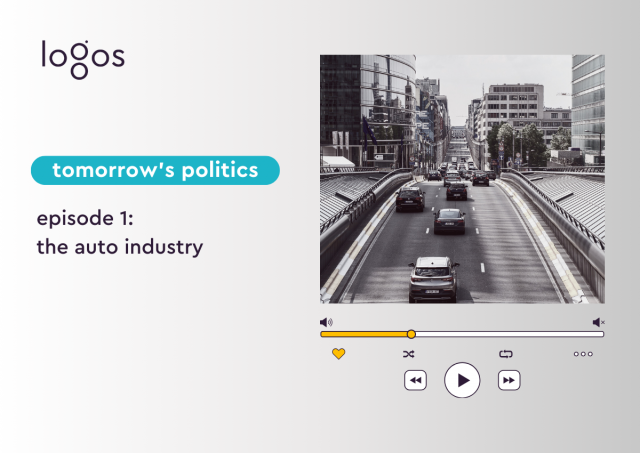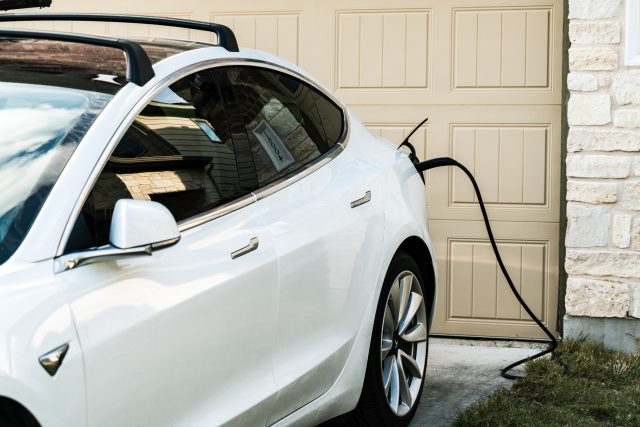
transport & mobility
Emissions Trading Scheme: How does the future of EU road transport look like?
On 14 July, the Commission came forward with an essential number of revisions of EU legislation in the Fit for 55 Package to adapt them to the Climate Law provisions.
With the Climate Law setting a 55% emissions reduction target by 2030 and climate neutrality by 2050, the proposals seek to strengthen the standards and boost the clean energy and mobility uptake. Surely, road transport will be a central piece in the game, as the sector accounted for more than 71% of overall transport emissions in 2018.
With political dialogue starting in the European Parliament at the beginning of September, it seems that the extension of the current EU emissions trading scheme (ETS) to the transport sectors (i.e. road, maritime and air) will not be an easy battle. The Greens have already expressed their scepticism regarding the impact this extension would have on the CO2 emissions and the EU citizens. However, other political groups seem to be more optimistic.
Opinions ahead of the proposal
The ETS road extension targets big fuel producers and importers. It intends to act as an enticement to decarbonise fuel, and therefore the transport sector. Initially, the European Consumer Organisation (BEUC) advocated against road transport in the EU ETS. BEUC’s primary argument revolves around its negative financial impact on consumers, predominantly on low-income households. The price of CO2 allowances would be set between 80 and 90 euros/ton in 2030 if road transport and buildings were to be covered by the EU ETS. Currently, this price is 25 euros.
In the end, the Commission put forward a parallel scheme for road transport to the current ETS. The scheme would provide an incentive for the fuel sector to invest in low-carbon technologies (via a cap-and-trade system) and avoid the overregulation of the market. FuelsEurope argued that only a separate scheme could trigger investment in low-carbon transport fuels and that its scope should be limited to the tank to wheel emissions. In the long run, the EU ETS for road transport should merge into the current ETS to achieve a more uniform cost of carbon across the economy.
Nobody would have thought a year ago that the Commission would move towards this, especially regarding the impact this scheme would directly have on the European citizens.
A clear market signal for the automotive sector
Although the intention is clearly to decarbonise transport, the impact on the automotive sector is not widely discussed. Nonetheless, the benefits for car manufacturers can be felt very differently across Europe. Putting a cap-and-trade system for fuels in transport would lead to higher prices for the consumers when buying fossil fuels. Consequently, Europeans might be pushed to use less their current petrol or diesel-fuelled cars. People might not even see the value in buying second-hand internal combustion engine (ICE) vehicles. With the CO2 standards for new cars and vans planned to be more stringent, certain OEMs might suffer even more with the inclusion of road transport in an ETS.
With fewer ICE vehicles on the market, electric vehicles (EVs) become more competitive. For a couple of months now, companies such as Volkswagen Group and Volvo Cars have set phase-out dates to sell ICE cars and EVs targets. Thus, this extension can present a real opportunity for the OEMs already engaged in the decarbonisation of road transport, more specifically, e-mobility. The German Association for the Automotive Industry (VDA) highlighted this reasoning when stating that “a clear commitment towards a substantial price signal can ensure long-term planning certainty and can thus spur investment in green technology”. In addition to including mitigation measures, the industries have high hopes regarding recharging infrastructure needed to boost the EVs uptake.
Whether the automotive industry wants it or not, the Commission intends to put all the resources available to reduce the use of petrol and diesel cars. Nobody would have thought a year ago that the Commission would move towards this, especially regarding the impact this scheme would directly have on the European citizens.
This bold move coming from the Commission marks an important milestone on the EU’s way to become greener. The social implications at stake here should not be underestimated and the discussions ahead between the institutions and the political groups will clearly test the EU’s capability to find common grounds.
What to expect next?
The Commission’s position shifted significantly since the discussion on the possible extension was brought to the table. In September 2020, Frans Timmermans, the Commission’s Vice-President responsible for the Green Deal, shared his concerns about including car and truck fuels in the EU carbon market. Instead, the EU should update the CO2 standards for new cars and strengthen its targets to boost the uptake of e-mobility. However, in June 2021, Commissioner Timmermans’ speech changed arguing that this proposal would be acceptable if the revenues gained from the scheme would be redistributed to the most affected households. This idea is consolidating itself within the Commission’s proposal for creating a Social Climate Fund to address the people that would be the most impacted by the extension of the EU ETS. With multiple commissioners voicing their disagreement with the proposal on the big day, it seems complicated to state in what direction the measure will go.
The reasoning behind putting forward this proposal is that the CO2 standards and the ETS road extension could be complementary. Indeed, Diederik Samson, Frans Timmermans’ Head of Cabinet, shared that the CO2 standards would only apply for new cars and vans, and therefore the extension of the EU ETS could be used as a tool to deal with the current vehicles on the market.
In the European Parliament, the political groups seem a bit sceptical when it comes to including road transport in the scheme. For instance, MEP Michael Bloss (Greens, Germany) stated early September that the inclusion of the new sectors (i.e. buildings and road transport) would have zero effect on the reduction of CO2 emissions. He argued that this would undermine more effective regulatory measures (i.e. CO2 emission performance standards), and at the same time constitute a burden for the EU citizens. MEP Pascal Canfin (Renew, France) publicly stated that he will fight against the Commission’s proposal arguing that this tool works for companies, but not for households facing short-term constraints. The respective positions of the political groups are not fully arbitrated yet, however, and they will certainly continue to mature as the real political bargain will begin around other key files under the Fit for 55 package in the following months.
Another critical political variable will be the coalition agreement resulting from the recent German elections. While at EU level, Greens/EFA advocate against such inclusion, in Germany, Die Grünen pushed for the introduction of a carbon price for transport while acknowledging that “social justice” ought to be improved, which sounds very much alike Commission’s rationale for its new Social Climate Fund. Some go as far as to say that support for ETS expansion to transport against the phase-out of fossil fuel subsidies could be the cornerstone of a political deal between the Greens and the FDP on climate policy.
This bold move coming from the Commission marks an important milestone on the EU’s way to become greener. The social implications at stake here should not be underestimated and the discussions ahead between the institutions and the political groups will clearly test the EU’s capability to find common grounds. Stakeholders have until 8 November to submit their feedback to the public consultation, which will feed into the high-level discussions.





